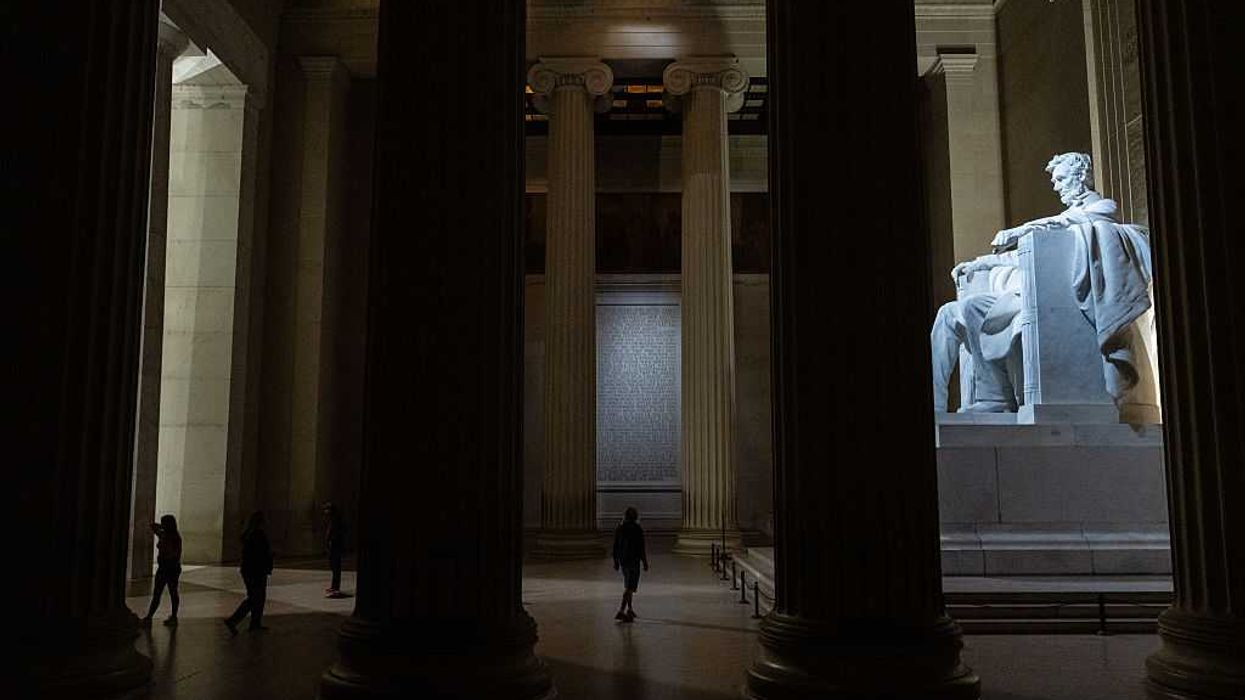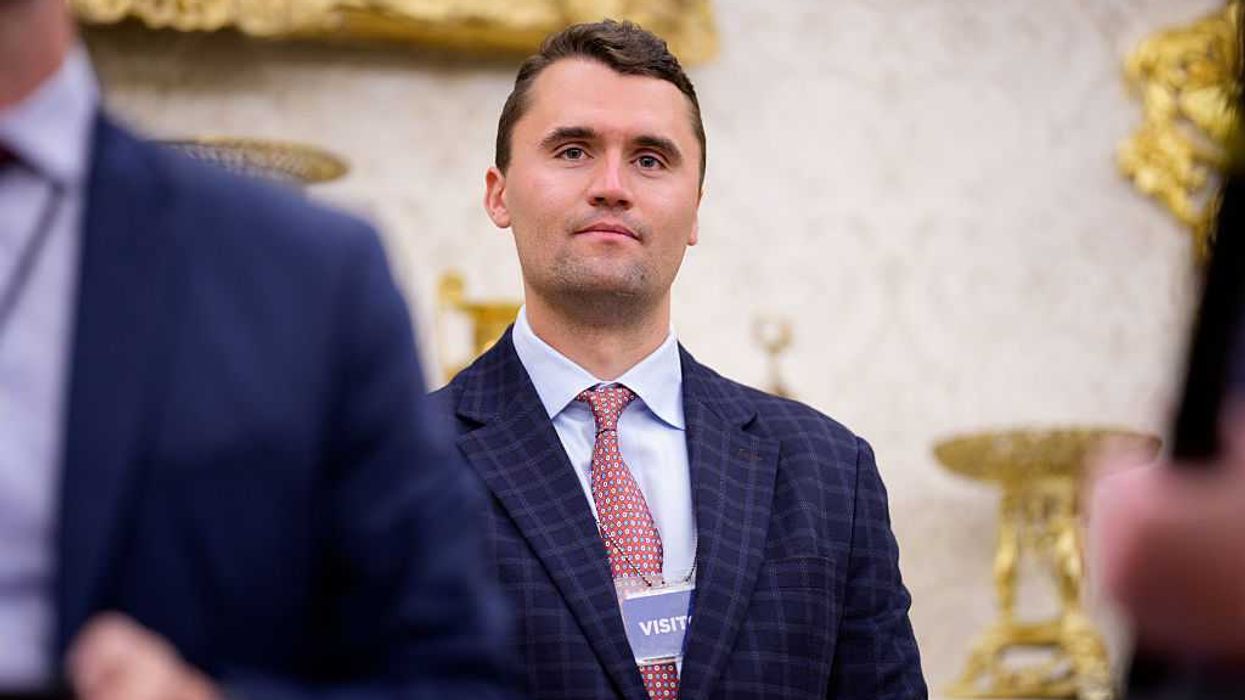What does it mean to be a conservative in 2025? Glenn offers guidance on what conservatives need to do to ensure the conservative movement doesn't fade into oblivion. We have to get back to PRINCIPLES, not policies.
To be a conservative in 2025 means to STAND
- for Stewardship, protecting the wisdom of our Founders;
- for Truth, defending objective reality in an age of illusion;
- for Accountability, living within our means as individuals and as a nation;
- for Neighborhood, rebuilding family, faith, and local community;
- and for Duty, carrying freedom forward to the next generation.
A conservative doesn’t cling to the past — he stands guard over the principles that make the future possible.
Transcript
Below is a rush transcript that may contain errors
GLENN: You know, I'm so tired of being against everything. Saying what we're not.
It's time that we start saying what we are. And it's hard, because we're changing. It's different to be a conservative, today, than it was, you know, years ago.
And part of that is just coming from hard knocks. School of hard knocks. We've learned a lot of lessons on things we thought we were for. No, no, no.
But conservatives. To be a conservative, it shouldn't be about policies. It's really about principles. And that's why we've lost our way. Because we've lost our principles. And it's easy. Because the world got easy. And now the world is changing so rapidly. The boundaries between truth and illusion are blurred second by second. Machines now think. Currencies falter. Families fractured. And nations, all over the world, have forgotten who they are.
So what does it mean to be a conservative now, in 2025, '26. For a lot of people, it means opposing the left. That's -- that's a reaction. That's not renewal.
That's a reaction. It can't mean also worshiping the past, as if the past were perfect. The founders never asked for that.
They asked that we would preserve the principles and perfect their practice. They knew it was imperfect. To make a more perfect nation.
Is what we're supposed to be doing.
2025, '26 being a conservative has to mean stewardship.
The stewardship of a nation, of a civilization.
Of a moral inheritance. That is too precious to abandon.
What does it mean to conserve? To conserve something doesn't mean to stand still.
It means to stand guard. It means to defend what the Founders designed. The separation of powers. The rule of law.
The belief that our rights come not from kings or from Congress, but from the creator himself.
This is a system that was not built for ease. It was built for endurance, and it will endure if we only teach it again!
The problem is, we only teach it like it's a museum piece. You know, it's not a museum piece. It's not an old dusty document. It's a living covenant between the dead, the living and the unborn.
So this chapter of -- of conservatism. Must confront reality. Economic reality.
Global reality.
And moral reality.
It's not enough just to be against something. Or chant tax cuts or free markets.
We have to ask -- we have to start with simple questions like freedom, yes. But freedom for what?
Freedom for economic sovereignty. Your right to produce and to innovate. To build without asking Beijing's permission. That's a moral issue now.
Another moral issue: Debt! It's -- it's generational theft. We're spending money from generations we won't even meet.
And dependence. Another moral issue. It's a national weakness.
People cannot stand up for themselves. They can't make it themselves. And we're encouraging them to sit down, shut up, and don't think.
And the conservative who can't connect with fiscal prudence, and connect fiscal prudence to moral duty, you're not a conservative at all.
Being a conservative today, means you have to rebuild an economy that serves liberty, not one that serves -- survives by debt, and then there's the soul of the nation.
We are living through a time period. An age of dislocation. Where our families are fractured.
Our faith is almost gone.
Meaning is evaporating so fast. Nobody knows what meaning of life is. That's why everybody is killing themselves. They have no meaning in life. And why they don't have any meaning, is truth itself is mocked and blurred and replaced by nothing, but lies and noise.
If you want to be a conservative, then you have to be to become the moral compass that reminds a lost people, liberty cannot survive without virtue.
That freedom untethered from moral order is nothing, but chaos!
And that no app, no algorithm, no ideology is ever going to fill the void, where meaning used to live!
To be a conservative, moving forward, we cannot just be about policies.
We have to defend the sacred, the unseen, the moral architecture, that gives people an identity. So how do you do that? Well, we have to rebuild competence. We have to restore institutions that actually work. Just in the last hour, this monologue on what we're facing now, because we can't open the government.
Why can't we open the government?
Because government is broken. Why does nobody care? Because education is broken.
We have to reclaim education, not as propaganda, but as the formation of the mind and the soul. Conservatives have to champion innovation.
Not to imitate Silicon Valley's chaos, but to harness technology in defense of human dignity. Don't be afraid of AI.
Know what it is. Know it's a tool. It's a tool to strengthen people. As long as you always remember it's a tool. Otherwise, you will lose your humanity to it!
That's a conservative principle. To be a conservative, we have to restore local strength. Our families are the basic building blocks, our schools, our churches, and our charities. Not some big, distant NGO that was started by the Tides Foundation, but actual local charities, where you see people working. A web of voluntary institutions that held us together at one point. Because when Washington fails, and it will, it already has, the neighborhood has to stand.
Charlie Kirk was doing one thing that people on our side were not doing. Speaking to the young.
But not in nostalgia.
Not in -- you know, Reagan, Reagan, Reagan.
In purpose. They don't remember. They don't remember who Dick Cheney was.
I was listening to Fox news this morning, talking about Dick Cheney. And there was somebody there that I know was not even born when Dick Cheney. When the World Trade Center came down.
They weren't even born. They were telling me about Dick Cheney.
And I was like, come on. Come on. Come on.
If you don't remember who Dick Cheney was, how are you going to remember 9/11. How will you remember who Reagan was.
That just says, that's an old man's creed. No, it's not.
It's the ultimate timeless rebellion against tyranny in all of its forms. Yes, and even the tyranny of despair, which is eating people alive!
We need to redefine ourselves. Because we have changed, and that's a good thing. The creed for a generation, that will decide the fate of the republic, is what we need to find.
A conservative in 2025, '26.
Is somebody who protects the enduring principles of American liberty and self-government.
While actively stewarding the institutions. The culture. The economy of this nation!
For those who are alive and yet to be unborn.
We have to be a group of people that we're not anchored in the past. Or in rage! But in reason. And morality. Realism. And hope for the future.
We're the stewards! We're the ones that have to relight the torch, not just hold it. We didn't -- we didn't build this Torch. We didn't make this Torch. We're the keepers of the flame, but we are honor-bound to pass that forward, and conservatives are viewed as people who just live in the past. We're not here to merely conserve the past, but to renew it. To sort it. What worked, what didn't work. We're the ones to say to the world, there's still such a thing as truth. There's still such a thing as virtue. You can deny it all you want.
But the pain will only get worse. There's still such a thing as America!
And if now is not the time to renew America. When is that time?
If you're not the person. If we're not the generation to actively stand and redefine and defend, then who is that person?
We are -- we are supposed to preserve what works.
That -- you know, I was writing something this morning.
I was making notes on this. A constitutionalist is for restraint. A progressive, if you will, for lack of a better term, is for more power.
Progressives want the government to have more power.
Conservatives are for more restraint.
But the -- for the American eagle to fly, we must have both wings.
And one can't be stronger than the other.
We as a conservative, are supposed to look and say, no. Don't look at that. The past teaches us this, this, and this. So don't do that.
We can't do that. But there are these things that we were doing in the past, that we have to jettison. And maybe the other side has a good idea on what should replace that. But we're the ones who are supposed to say, no, but remember the framework.
They're -- they can dream all they want.
They can come up with all these utopias and everything else, and we can go, "That's a great idea."
But how do we make it work with this framework? Because that's our job. The point of this is, it takes both. It takes both.
We have to have the customs and the moral order. And the practices that have stood the test of time, in trial.
We -- we're in an amazing, amazing time. Amazing time.
We live at a time now, where anything -- literally anything is possible!
I don't want to be against stuff. I want to be for the future. I want to be for a rich, dynamic future. One where we are part of changing the world for the better!
Where more people are lifted out of poverty, more people are given the freedom to choose, whatever it is that they want to choose, as their own government and everything.
I don't want to force it down anybody's throat.
We -- I am so excited to be a shining city on the hill again.
We have that opportunity, right in front of us!
But not in we get bogged down in hatred, in division.
Not if we get bogged down into being against something.
We must be for something!
I know what I'm for.
Do you?
 business that Glenn has taken a special interest in – the design and development arm known as Walt Disney Imagineering.
business that Glenn has taken a special interest in – the design and development arm known as Walt Disney Imagineering.

 Eric Lee / Stringer | Getty Images
Eric Lee / Stringer | Getty Images
 Andrew Harnik / Staff | Getty Images
Andrew Harnik / Staff | Getty Images Hesham Elsherif / Stringer | Getty Images
Hesham Elsherif / Stringer | Getty Images